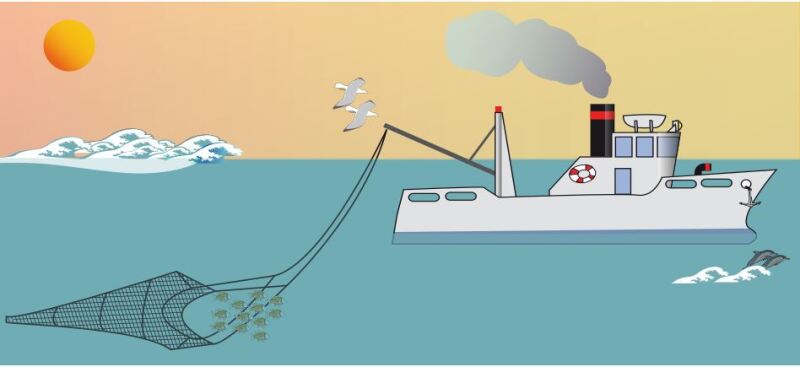Having struggled to commit some 6,000 words into a Word document for the first time in a long time in time to meet the 2022 Annual Technical Conference and Exhibition (ATCE) deadline (with more than “a little help from my friends”, coauthors, and colleagues), I was left wondering
- Was this a good use of our collective time?
- Was this the best way to get our message across to its intended audience
Of course, the answers are
- It all depends on the author’s personal and corporate objectives.
- It should have been a good use of time, provided we did not overrun the budgeted time, because we addressed those questions during the Stage 1 Gate review.
For those of us who are production and facilities generalists, authoring a technical paper is just another five-stage mini-project. The objectives. scope, frame, key decision points, and tentative schedule need to be clearly defined at the outset.

In Stage 2, we looked at the alternates to writing an abstract and committing to delivering a formal technical paper within the schedule defined by the ATCE Organizing Committee.
SPE papers and posters that are presented at an SPE technical conference or published in SPE magazines or journals are intended to help a wide audience of other SPE members do their jobs as practicing petroleum engineers.
The British have a great expression for selecting a course of action to take advantage of the circumstances: “horses for courses.” A horse that performs well on a dry race course may not run as well on damp ground after a prolonged period of rain, for example.
Thus, while my active involvement in SPE and the former Petroleum Society of CIM (which is now the SPE Canada Region) has been continual over the past 47 years, my publication history has been very intermittent.
Shortly after Bill Murthy (our regional operations director and my manager’s boss) encouraged me to join SPE, he informed me that
- I should write a paper for the 1977 SPE Offshore Europe Conference because the company saw value in supporting the technical program, and it would be a good learning experience for me as an ambitious young professional.
- The company expected to persuade my coworkers to publish the results of a tool development exercise if it proved useful. The joint venture was funding the pilot testing program and they did not want anyone patenting the concept or be required to pay a license fee on an incremental innovation.
- These were perfectly clear marching orders.
Similarly, later in my career, when I was working for a small, employee-owned consultancy (APA Petroleum Engineering) in Calgary, our obsession was the potential return on the time invested. (There is always an alternate opportunity cost to the time spent on drafting a paper.) In general, a PowerPoint presentation at a regional SPE workshop or local section meeting would cost-effectively reach the intended end users in our local market. When the potential market was in the US or overseas, an SPE paper was a better option.
I realize that my experience is quite different from the publication objectives of a post-graduate, research worker, academic, or subject-matter expert working on emerging technology and/or new tools and equipment. Nevertheless, a cost-benefit and risk and reward analysis should be built into the decision-making process and in selecting the best vehicle to deliver the intended message.
The primary author of a potential SPE paper also needs to have their abstract accepted by the event organizing committee. It is self evident that an efficient process for managing, archiving, and providing access to technical presentations and papers via virtual or face-to-face events and publications lies at the core of SPE’s primary mission to disseminate and exchange technical knowledge.
So, why is it so hard to get an abstract or article accepted for a conference or publication?
Getting a paper summarized in a reputable magazine or published in a peer-reviewed journal is a competitive sport for which we must train, and at which we will likely fail in the first few attempts.
SPE offers online and classroom training courses on the best practices in writing technical papers.
- Terry Palisch, 2024 President-Elect, “How To Write a Good Abstract and Get It Accepted”
- Sunil Kokal, “How To Write a Good Technical Paper”
- Camille Jensen, training course on Technical Writing Workshop for Engineers
For members of the Production and Facilities community, the key to success may lie in asking ourselves
- When does an idea or innovative concept become knowledge that merits broad dissemination?
- What do our peers expect as consumers of the materials presented at this specific conference?
- What do the sponsors of SPE Events expect their employees or customers to take away from the event?
- Can (or should) this idea, tool, or technology be explained in a supplier-agnostic way?
- Is the underlying message a quasi-commercial aimed at driving new business development, if only by implication? (For example, with a subliminal message such as “to consider the prime author’s employer in a future Request for Information or Quotation (RFI or RFQ) because the company is doing creative work and has super-smart people on its staff”).
There is a world of difference between sharing field experiences with innovative technologies, techniques, or tools vs. promoting a concept that merits incremental funding for bench or pilot testing. If we are only promoting a concept, will we be able to report simulation, bench- or lab-testing results? Alternately, the focus could be on the technical and commercial feasibility assessment to demonstrate that the idea merits either prototype or pilot testing.
Promoting an expanded demonstration project in a completely different setting can be especially challenging for suppliers or service providers, especially when the operator of the original pilot perceives a potential competitive advantage and is unwilling to approve the release of a modicum of the test data. However, those who have been at this game for a while can often explain their technology and learnings in a way that obscures where, when, and by what company the tests were conducted.
Papers and posters presented at at SPE technical conferences should help other SPE members do their jobs as practicing petroleum engineers. If the abstract demonstrates that this will be achieved in a noncommercial manner, the paper will be accepted, regardless of the author’s company affiliation.
Nevertheless, it is extremely difficult for those reviewing abstracts to separate “the grain from the chaff” since they don’t have a completed manuscript to assess. They face criticism for being either too meticulous or too lenient. There may be a case to be made for more-rigorous training of session chairs and technical committee members, particularly for the high-profile conferences.
In 2018, John Donnelly, JPT Editor, wrote “Getting Published in JPT.” He explained how in selecting technical papers for synopsis (and/or as a recommendation for further reading) in JPT's Technology Focus section, volunteer SPE members of the Editorial Review Board try to ensure that published materials will be of interest to a broad cross section of our constituents and stakeholders, including operators, suppliers, service companies, consultants, academics, young professionals, and students.

There are simpler, less time-consuming options for getting a story into the public domain through the auspices of the SPE.
- Propose a 1,500-word noncommercial article and/or case study for publication in SPE’s magazines (JPT, Oil and Gas Facilities, HSE Now, Data Science and Digital Engineering, or The Way Ahead).
- Make presentations to a local (geographic) section or virtual technical section.
- Post a concise summary on the appropriate Community or Technical Section discussion boards in a way that provokes discussion or solicits public or private responses on SPE Connect.
- Consider Sponsored Content in a magazine or virtual events on SPE Energy Stream.
- Consider conventional online advertising.
- SPE magazines include Sponsored Articles of a slightly more commercial nature, as well as conventional advertising.
- Similarly, a service provider or equipment manufacturer can sponsor a virtual event, via SPE Energy Stream, including 30-minute SPE Tech Talks or 60–90 min sponsored webinars that can include an interactive component.
The Production and Facilities Advisory Committee has proposed an online seminar on this topic to be held in 3Q 2022 and has invited
- Niall Fleming, a specialist in production technology for Equinor and the Executive Editor of the SPE Editorial Board and the Production & Operations Editorial Committee.
- Representatives of the SPE publications and virtual events staff.
- Victoria Pons, director of research and strategic development at WellWorx Energy, to act as the moderator.
I hope this proves useful and would like to thank Niall Fleming, Greg Stephenson, and Victoria Pons for provoking this project and for some of the ideas presented in this article.


